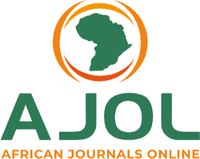Complexation Behaviours and Enhanced Biological Activity of Cefuroxime, Cefixime, and Their Cobalt(II) Mixed Ligand Complexes: Insights into Octahedral Coordination Geometry and Chelation Effects
DOI:
https://doi.org/10.56892/bima.v8i2B.718Keywords:
Cefuroxime, Cefixime, Cobalt(II) Complexes, Mixed Ligand Complexes, Complexation Behavior, Biological Activity, Antibacterial, Antifungal, Spectroscopy, Molar Conductivity.Abstract
This study performed the synthesis, characterization, and biological activity of cobalt(II) complexes with cefuroxime, cefixime, and their mixed ligand. The coordination complexes were synthesized using stoichiometric reactions under controlled conditions, achieving yields of 75-81%. Characterization was performed using UV-Vis spectroscopy, FTIR spectroscopy, and molar conductivity measurements. UV-Vis spectra indicated significant electronic transitions due to metal-ligand interactions, while FTIR spectra showed characteristic shifts and new peaks confirming complex formation. The complexes exhibited distinct colors: purple for [Co(CFX)Cl₂], green for [Co(CFI)Cl₂], and violet for [Co(CFX-CFI)Cl₂], reflecting variations in their coordination environments. The melting points ranged from 252°C to 278°C, with the mixed ligand complex demonstrating the highest thermal stability. Molar conductivity values varied, indicating different degrees of ionic dissociation, with the mixed ligand complex showing the highest conductivity, suggesting a more dynamic coordination environment. Biological activities were evaluated through in vitro antibacterial and antifungal assays. The results demonstrated that cobalt(II) complexes exhibited enhanced antimicrobial properties compared to the free ligands, with the mixed ligand complex showing superior efficacy. These findings suggest that metal-ligand interactions significantly enhance the biological activity of the complexes. This research highlights the potential of cobalt (II) complexes of cefuroxime and cefixime as promising candidates for developing new antimicrobial agents, emphasizing the importance of metal-ligand interactions in drug design and development.





